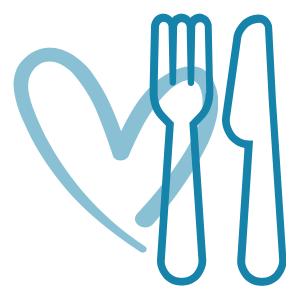What is it:
Often mentioned in conjunction with lipids (fats), cholesterol belongs to a class of lipids known as sterols. Sterols are structurally different to the lipids covered in the post ‘Fulsome Fats’. Whereas the lipids in this previous post were formed from long chains of carbon and hydrogen atoms, a sterol has four fused ring structures. Cholesterol has a short chain of carbon and hydrogen atoms joined to the right outer ring – see the photo above which gives a pictorial representation.
Where does it come from:
Cholesterol is commonly found in foods containing animal fat, such as meats and dairy spreads. It’s also abundant in shellfish and eggs. The lipids which circulate in the blood plasma, including cholesterol, are insoluble in plasma and require a specific transport mechanism known as lipoproteins. LDL or Low-Density Lipoproteins deliver cholesterol to the tissues whilst HDL or High-Density Lipoproteins remove cholesterol from the tissues and transport it to the liver. It’s often surprising to learn most cholesterol in the body is actually made in our liver rather than originating from the cholesterol in our diet. We typically consume less than 1g of cholesterol per day, whereas around 8g is found in the plasma and around 140g in the body in total1.
Appropriate levels of cholesterol are maintained such that if dietary intake increases, the synthesis of cholesterol within the body is reduced.
What does it do:
- Cholesterol is an important feature in cell membranes which bound every cell in the body.
- Cholesterol is used to synthesise the steroid hormones, of which there are five major classes2:
- Progesterone which regulates pregnancy
- Cortisol and corticosterone which suppress the inflammatory response
- Aldosterone which is one of the regulators of kidney function
- The male sex hormones, including testosterone
- The female sex hormones including oestrogen
- HDL cholesterol is transported to the liver from the tissues, where it is used to make bile acids and bile salts which are stored in the gall bladder. Bile assists with the digestion of dietary fat and is subsequently excreted.
- On exposure to sunlight, Vitamin D is created in the skin from an intermediary of cholesterol synthesis. The most abundant form is Vitamin D3, also known as cholecalciferol, which helps regulate calcium and phosphorous levels in bone tissue.
Phytosterols and phytostanols
Some plants, for example corn, wheat and rye, make sterol-like compounds which studies suggest decrease levels of cholesterol in the blood3. Because the compounds are structurally similar to cholesterol they act as competition for absorption by the gut, thereby lowering the amounts of ‘actual’ cholesterol taken in.
Research
Historically, dietary cholesterol (cholesterol taken in as food, not cholesterol made endogenously by the body) was implicated as a risk factor for cardiovascular disease (CVD). Consequently, up until 2016, advice from the U. S. Department of Health was to consume no more than 300 mg of cholesterol per day. However, following reviews of observational studies carried out in several countries regarding the link between dietary cholesterol, lipoproteins and CVD, the relevance of this guidance for heart health was questioned and has now been dropped4, the key message being to stick to a healthy eating pattern. HeartUK offer similar advice, linked here, excepting individuals who have a genetic predisposition to high serum cholesterol levels.
An interesting article in Nature also raises the question whether the long-held principle of LDL cholesterol being the ‘bad guy’ may also be flawed5.
References
- FRAYN, Keith N. Metabolic Regulation: A Human Perspective. 3rd ed. Chichester: Wiley-Blackwell, 2010, pp 298-299
- MATHEWS, Christopher K., van Holde, K.E. Biochemistry. Redwood City, CA: Bejamin/Cummings, 1990, pp 633
- GUPTA, A. K. SAVOPOULOS, C.G., AHUJA, J., HALZITOLIOS, A.I. Role of phytosterols in lipid-lowering: current perspectives. QJM: An International Journal of Medicine. 104(4), April 2011, 301–308. Available from: https://doi.org/10.1093/qjmed/hcr007
- CARSON, J. A. S. et al. Dietary Cholesterol and Cardiovascular Risk: A Science Advisory from the American Heart Association. Circulation. January 2020, 141(3). e39-e53. Available from: https://doi.org/10.1161/CIR.0000000000000743
- HEALEY, N., ed. Is there more to a healthy-heart diet than cholesterol? Nature. June 2021, 594, s12-s13. Available from: https://doi.org/10.1038/d41586-021-01455-4
